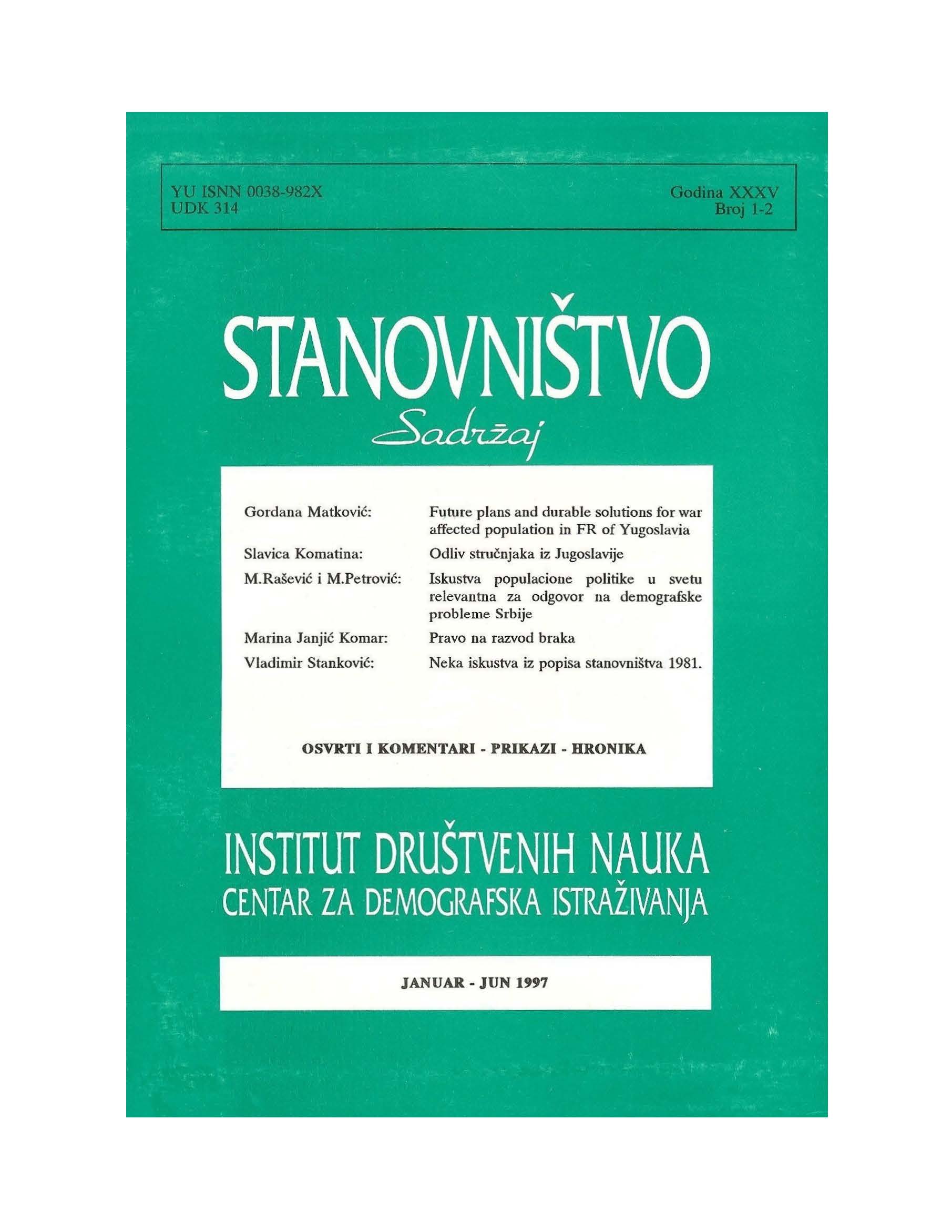Case Studies in Population Policy Concerning Demographic Problems in Serbia
Main Article Content
Abstract
Attention has been given to the direction and type of measures to be taken in the immediate future dealing with fertility, mortality, migration policies and problem of population ageing. A major portion of the article is devoted to the policy of population fertility and aims to contribute to the research of experiences in implementation of population policy across the world. Interest in this particular policy is due not only to the fact that it represents the demographic policy per se and implies the greatest number of uncertainties, but also because of the need and widespread demands for its implementation in our country.
The main features and results of the policy implemented so far in the area of population fertility as well as the measures proposed over the coming decades disclose major problems which are almost impossible to resolve in both the developed and the developing world as opposed to the mortality and migratory policies and the political response to the ageing of population. Despite doubtless improvements in terms of quality - coverage, principles and targets, developed institutional framework - fertility policy is not efficient enough to resolve the population-related problems. Steps to increase or decrease the birth rate must be more intensive, more comprehensive and scientifically based. The possible new policy directions lie in economic development which takes into account the demographic factor in the developing world and the population education in the developed countries. However, major and probably the most complex issue to be resolved by the population policy lies in the sphere of awareness at the level of the state, political authorities, social structures and individuals.
Article Details

This work is licensed under a Creative Commons Attribution-NonCommercial 4.0 International License.
Published by the Institute of Social Sciences - Center for Demographic Research





